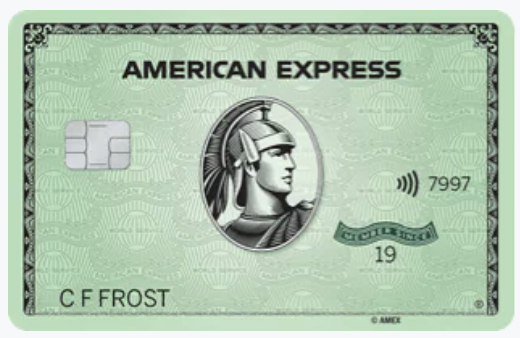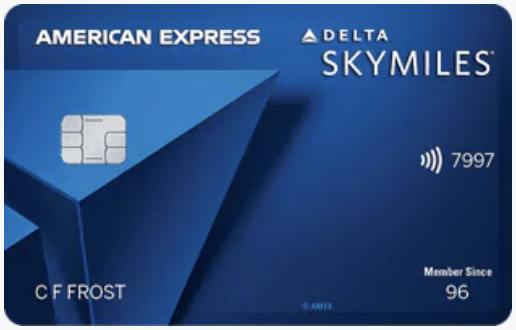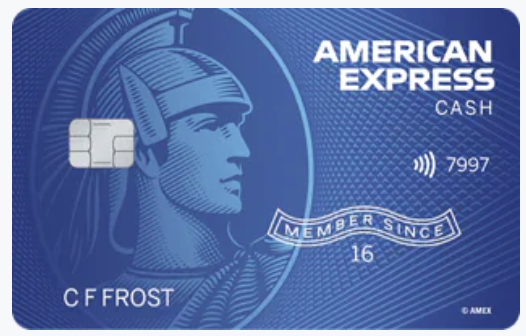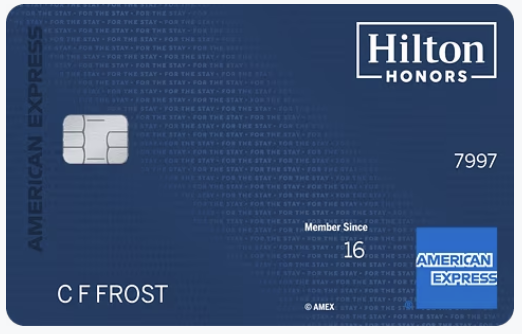The Complete American Express Credit Card Tier List
If you’re looking to make the most of your credit card rewards and benefits, you’ve probably seen and heard about many different credit cards from American Express, and for good reason: AmEx has an extensive lineup of cards designed to cater to different spending habits and financial goals! Whether you're a frequent traveler, a cashback enthusiast, or you have a favorite travel brand, American Express likely has a card for you.
But the issue with having so many possible cards to choose from and apply for is that it can often be overwhelming to actually determine which ones are right for you! That's why we’ve come up with a complete American Express credit card “tier list” to help you rank the cards and figure out which ones you should consider adding to your wallet. We have thoroughly evaluated each card based on a wide variety of factors including reward rates, annual fees, introductory offers, additional perks, and much more to help you make an informed decision.
For those who don’t have experience with reading tier lists, they are a helpful way of visually ranking a large variety of items on a single screen. For this tier list, each AmEx credit card will get one of the following rankings:
S (Super) – One of the best cards on the market
A (Very good) - A great card with minimal downsides
B (Okay) - A good card, but there may be better options out there
C (Not Great) - A mediocre card, but it may have use cases for certain situations
F (Bad) - Stay away from this card unless you have a specific reason to get it
For this list, we’re going to focus exclusively on personal cards (as opposed to business cards), as trying to contrast business and personal cards isn’t an accurate comparison or helpful for most people.
With that background out of the way, let’s jump into the tier list! We show the full card tier list at the end of the article.
The Ultimate American Express Credit Card Tier List
1. American Express Green
The AmEx Green is the quiet younger brother of the premier AmEx card family. Unlike some of the other entries on this list, the Green doesn’t come with as many flashy rewards or unmatched benefits. Instead, it provides a wide range of bonus spending rewards (3x points on all travel and transit, as well as worldwide at restaurants and on delivery within the USA) and key benefits, such as a $189 CLEAR credit and a $100 LoungeBuddy credit, all for $150 a year.
The American Express Green card is not going to knock anyone’s socks off, but it is a great option for someone looking for an introduction into the world of AmEx travel cards without having to pay massive annual fees (like with some of the alternatives). However, the Green is simultaneously rarely ever going to be the best card in someone’s wallet, especially if that someone has some of the other cards on this list. With a mediocre sign-up bonus to boot, this card really only makes sense for those who want a more introductory credit card, or those who want to pair this card with another point-earning card in the AmEx ecosystem.
Summary: A decent travel card that will do the job without turning any heads
AmEx Green Tier : B
2. American Express Gold
The AmEx Gold card is among the most iconic cards in the American Express lineup on looks alone. With 4x points on worldwide dining, 4x points on US groceries and US delivery/takeout, and 3x points on flights, the AmEx Gold is one of the best cards in the AmEx ecosystem for pure MR point-earning. Compared to most high-end cards, the Gold gives you points back on what is likely to be your biggest spending areas (e.g., dining, travel), and offers more points per dollar spent than any card in the Chase line-up. With $120 in Uber credits, $120 in restaurant credits, $100 in Resy credit—and if you live in New England, the $84 in Dunkin credits—it is easy to get the $325 annual fee of the Gold down to less than $10. If you consistently (and naturally) use the credits, it’s hard to beat the AmEx Gold in value.
However, the Gold is not without its faults—primarily, that most of the best benefits (Uber credit, 4x points on groceries) are only valid in the USA, making this less than ideal for anyone who frequently travels internationally or who lives abroad for a substantial portion of the year. Plus, with several areas of the country lacking in Dunkin stores, the new Dunkin credit is extremely hit-or-miss depending on where you live. Pro tip: Even if you don’t live near a Dunkin, you can add $7 to the Dunkin app each month to get the credit, to then use whenever you’re next in New England!
Despite that, the Gold is still the best card AmEx has for earning lots of points with straightforward spending. And if you can get the 90,000 points (or even the rare 100,000 points) sign-on bonus, getting this card should become a no-brainer.
Summary: A relatively simple but effective card that can give net positive value to an extremely broad range of people
AmEx Gold Tier : S
3. American Express Platinum
Ah, the American Express Platinum. No other card on the market can feel so luxurious in your wallet, and yet so worthless every time you show up at a Centurion lounge. Jokes aside, the Platinum card is so famous in the credit card world for good reasons—it gives many benefits (e.g., lounge access, more credits than you could shake a stick at), at the cost of a massive annual fee ($695). Therefore, the Platinum could theoretically go in almost any tier of this list, depending on how many of the credits and benefits you can use naturally.
Live near an Equinox, frequently use Uber, and like to earn points on flights? Then this card is easily in the S tier of credit cards for you. However, if you live miles from the nearest restaurant and rarely travel, there is no chance that this card gives you a net positive value, regardless of how much someone on Instagram hypes it up.
Therefore, the Platinum is probably the trickiest card to place on this list and is simultaneously both overvalued and undervalued. While the card’s value changes so much for different people, overall, the Platinum has enough distinct benefits and spending bonuses to make it a great addition for most people (i.e., everyone who flies at least twice a year) and who are willing to put in the effort to track benefits.
Summary: The ultimate coupon book of benefits that varies in value dramatically from person-to-person
AmEx Platinum Tier : A
4. Delta SkyMiles Blue
The SkyMiles Blue card from Delta is the airline’s entry-level offering into the world of Delta-branded AmEx credit cards, giving you 2x miles on dining/Delta purchases and 20% off in-flight purchases. Unfortunately, that’s where the benefits of the Blue card end. Granted, the card has no annual fee and is extremely easy to get approved for; however, there are dozens of other cards on the market with no annual fee that also return either more cash-back or more valuable rewards (plus, SkyMiles are notoriously hard to get great value out of, and often end up being redeemed for ~1 cent per point). Stay away unless it’s the only card you can get approved for.
Summary: A beginner card that does little to help anyone
Delta Blue Tier : F
5. Delta SkyMiles Gold
The Delta SkyMiles Gold card is a major upgrade over the Blue, offering a larger sign-on bonus (40,000 SkyMiles after $2,000 spend), 2x miles on dining, groceries, and Delta spend, a free checked bag on all flights, 15% off award travel bookings, priority boarding (Main Cabin 1), as well as a $100 flight credit if you spend $10,000 on the card in a year.
You’d think that such a substantial upgrade in benefits and rewards would come with a corresponding massive increase in annual fee; however, the Delta SkyMiles Gold card is free for the first year and then only costs $95 a year after. To put that into perspective, if you take one international flight or two domestic flights a year, the free checked bags will pay for the annual fee before even thinking about the spending benefits, flight discounts, and intangible benefits (priority boarding). The only issue with this card (that makes it worse than the AmEx Gold card) is the inflexibility of SkyMiles as a reward currency.
Summary: One of the best benefit-to-fee ratios of any card on the market
Delta Gold Tier : A
6. Delta SkyMiles Platinum
The third card in the Delta quadfecta is the SkyMiles Platinum. The Delta Platinum card offers slightly higher spending rewards than the gold—giving 3x miles on Delta purchases and hotels, 2x miles on dining and US food delivery—as well as (paid) Delta SkyClub Access, a free checked bag, and $1 MQD towards Delta status for every $20 spent, and a $100 fee credit for TSA Pre/Global Entry.
Arguably most importantly, for every year you have the card, you get a free domestic Main Cabin round-trip companion certificate; depending on how you use this, it can be worth up to ~$500. Therefore, the value of this card will likely come down to whether you can use the certificate, and if so, how much you value can get for it. For anyone booking travel with family or friends within the domestic USA, this is an excellent benefit that can easily offset the $250 annual fee.
However, if for any reason you can’t use this companion pass (and not to dissuade, but Delta has minimal availability for companion seats on any given flight), the card’s value plummets. This card could easily be in A tier if the companion availability was more consistent (such as with Alaska Airlines), but unfortunately, that is not the case with the Delta Platinum.
Summary: If you can find availability, one free trip a year for a partner, plus some miscellaneous benefits
Delta SkyMiles Platinum Tier: C
7. Delta SkyMiles Reserve
The final card in the Delta credit card line-up is the Delta SkyMiles Reserve. The Reserve is the most premium Delta card, providing an impressive set of benefits for a whopping $550 annual fee. However, the benefits of this card include 3x miles on Delta purchases, a free checked bag, access to complimentary seat upgrades, free Delta SkyClub access, priority boarding, $1 MQD per $10 spent on the card, and a domestic First Class, Delta Comfort+, or Main Cabin round-trip companion certificate.
While these benefits are great, the more-than-doubled annual fee compared to the Delta Platinum makes it substantially harder to get as much value out of the card. Sure, this card is helpful if you’re planning on flying First Class anyway, but the data show that only a small fraction of travellers even look at FC seats when booking a flight. Plus, if you already have status, this card’s status earning and upgrade potential won’t do too much to help you progress any further in the Delta ecosystem.
Summary: A card with flashy benefits and value for a small subset of Delta loyalists
Delta SkyMiles Reserve Tier: B
8. Blue Cash Preferred
As the first cash-back card on this list (one of only a few in the AmEx ecosystem), the Blue Cash Preferred occupies a unique space for American Express. From a spending rewards perspective, this card has a plethora of cash-back benefits: 6% back on US groceries and US streaming services, 3% back on transit, and 3% back on gas. As well, this card can also give you $84 a year on the Disney Bundle and a $120 Equinox credit—if you can use either of these benefits, this card is a no-brainer at its $0 first year annual fee and $95 a year after that.
However, for most people, this card is definitively okay. No-one is going to walk away with thousands in saved cash-back, but no-one will likely be extremely disappointed either. If you can use the benefits or if you can spend enough on the relevant categories to save $95 in cash-back every year, this card is a good fit for you (but that definitely isn’t everyone).
Summary: An alright cash-back card that can provide a little bit of benefit to a lot of people
Blue Cash Preferred Tier: B
9. Blue Cash Everyday
As the little brother to the Preferred, the Blue Cash Everyday card doesn’t really make sense. While it has no annual fee, it only gives 3% back on groceries, US online retailers, and gas, all up to $6,000 a year. Sure, those are all technically good spending categories. However, if you want a cash-back setup, we’d recommend an all-encompassing 2% back card that gives more exciting benefits or a better sign-on bonus—and there are many. While this card isn’t going to be bad for anyone, it’s not going to be particualrly good for anyone either.
Summary: The credit card equivalent of an unsalted potato chip
Blue Cash Everyday Tier: C
10. Cash Magnet Card
This one’s simple: no annual fee, 1.5% cash-back on all purchases. This is about as middle-of-the-road as it gets, and we’d again recommend looking for a flat 2% cash-back card as there are many of them on the market (even if you have to go outside the AmEx ecosystem).
Summary: A subaverage cash-back card
Cash Magnet Card Tier: F
10. Marriott Bonvoy Bevy
The first of the two Marriott Bonvoy co-branded American Express cards is the Bevy. Let’s start with the basics of this hotel card: you get 6x points back on Marriott purchases, 4x points at global restaurants and US groceries, and 2x points on each dollar spent, with an 85,000 point sign-on bonus. With the Bevy, you also get an additional 1,000 points per hotel stay, 1 free night after you spend $15,000 on the card, instant Gold Elite status, 15 elite credit nights per year, all for a $250 annual fee.
Overall, this list of benefits sounds extremely impressive; however, even if you combine all of them together, it’s still tough to justify the Bevy based on its annual fee. Compared to other hotel cards (like the World of Hyatt card from Chase), you have to actively fight to come out ahead in each year you use the card, especially with the inflation of Marriott’s point redemptions. Beyond getting the sign-on bonus, this card likely won’t get you very far.
Summary: A long list of benefits that still doesn’t make up the fee
Marriott Bonvoy Bevy Tier: C
10. Marriott Bonvoy Brilliant
The second of Marriott’s AmEx co-branded credit cards is the Bonvoy Brilliant. Unlike the Bonvoy, the Brilliant has no reservations about what it is designed to be—a luxury travel card for getting the most out of hotel stays. With a whopping $650 annual fee (the second high on this entire list), cardholders get a 90,000 point sign-on bonus, 6x points on Marriott stays, 3x points at restaurants and flights, 2x points on everything else, $25 per month in restaurant dining credits, 1 free night award per year, Marriott Platinum status, a $100 fee credit for TSA-pre/Global Entry, 25 elite night credits, and Priority Pass lounge access.
The list of card benefits is overwhelming, so let's break it down. From the $650 annual fee, the $300 annual dining credit and the free night award alone can be used to easily offset the annual fee to essentially $0. From that point, the spending rewards and other benefits are just added perks and net positive value. However, given the importance of using the free night credit in getting value out of the card, this card makes the most sense for Marriott frequenters or those who know they can naturally use the credit.
Pro-tip: Keep an eye out for sign-on bonus increases; at certain times in 2023, the sign-on bonus practically doubled to 150,000+ points. At that point, this card is worth getting in almost all situations.
Summary: The ultimate card for Marriott loyalists
Marriott Bonvoy Brilliant Tier: A
11. Hilton Honors Card
The Hilton Honors AmEx card is the base model of the Hilton/AmEx trifecta. This no-annual-fee card gives you 7x points, on Hilton stays, 5x points on dining, groceries, and gas, and 3x points on everything else, and automatic Hilton Silver status.
For anyone who is brand new to the credit card scene, wants a hotel-based credit card, and refuses to pay an annual fee under any circumstances, this could be a good option. However, for almost everyone else, this card isn’t going to be worth the hard inquiry on your credit, as although the spending bonuses seem high, the Hilton points ecosystem is extremely inflated, making it harder to use any points you earn.
Summary: An incredibly basic card in a tough ecosystem
Hilton Honors Card Tier: C
12. Hilton Honors Surpass
Moving on to the more exciting Hilton cards, we’ve got the Hilton Honors Surpass. This card gives you 12x points on Hilton stays, 6x points on dining, groceries, and gas, 4x points at online retailers, and 3x points everywhere else. Plus, you get a healthy sign-on bonus of 130,000 points when you spend $3,000 in 6 months, automatic Hilton Gold status, $200 in Hilton incidentals (split into 4 $50 quarterly statement credits), and a free night if you spend more than $15,000 on the card in a year. All of this is going to cost $150 per year.
If you consistently stay at Hiltons, this card is a no-brainer acquisition: the $200 hotel incidental statement credit covers the annual fee alone, and while you need to stay at least 4 times a year to get the full benefit, Hilton lovers will be doing that already. Plus, with the free breakfast from Gold status and the huge point return on Hilton spending, this card is excellent and is worth investing in regardless of the Hilton point inflation.
Summary: An excellent card for any Hilton lover
Hilton Honors Surpass Tier: A
13. Hilton Honors Aspire
The fanciest and most expensive of the three Hilton American Express cards is the Hilton Honors Aspire. The Aspire may cost $550, but it grants its holders a variety of massive spending bonuses (14x points on Hilton, 7x on travel and dining, and 3x points on everything else), automatic Hilton Diamond status (including possible free upgrades), a $400 Hilton resort credit (split into 2 $200 credits), a free night award, a $200 flight credit (split into 4 $50 credits), and a $189 CLEAR credit.
As you can imagine, there are a plethora of ways to get enough value out of this card to offset the annual fee. Plus, this card gives you a 150,000 point sign-on bonus after you spend $6,000 in 6 months.
The bottom line for this card is simple: if you frequent Hilton properties or want to stay at Hilton resorts, then this card is an excellent addition to your wallet.
Summary: The supreme card for Hilton loyalists
Hilton Honors Aspire: A
14. Amex EveryDay Preferred
The final card on our tier list is one of the older cards in the rotation, the AmEx EveryDay Preferred. This card gives you 3x points on US groceries, 2x points on US gas, and 1x points on everything else, all for $95 a year. This card also gives you 50% more points on all your spending if you use the card more than 30 times in a month.
Back when the EveryDay Preferred came out in 2014, it was fairly revolutionary. But in 2024, the competition has improved and this card has stayed largely the same. However, that means that the EveryDay Preferred is now super underrated—sure, it’s not the most helpful card on the market, but if you hit the 30 times usage, you’re suddenly getting 6x points on groceries. And with AmEx Membership Rewards points being extremely valuable, that can go a long way towards travel. There aren’t many cards in the AmEx ecosystem that can help you earn that many Membership Rewards, but we also understand why this card has 0 hype around it.
Summary: A daily driver card that is good for those who love MR points
AmEx EveryDay Preferred Tier: B
Summary
The full American Express credit card tier list, from S (best) to F (worst)
There you have it, the full American Express credit card tier list! While every tier list is subjective, based on our personal experience with each of these cards, we stick by all the ratings we’ve given here. If you disagree with any of our ratings, make sure to leave a comment below, or make your own tier list to compare against ours!
If you’re interested in more credit card tier lists, make sure to check out the complete Chase Bank credit card tier list and our Capital One credit card tier list. We hope you enjoyed this article!
Suggested Articles























